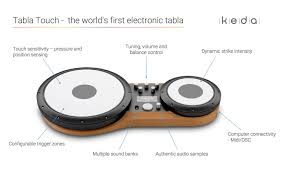The Power of Design
Design is more than just aesthetics – it’s a powerful tool that shapes the world around us. From the buildings we live in to the products we use, design influences our daily lives in profound ways.
Good design is not just about making things look pretty; it’s about solving problems and improving functionality. Whether it’s creating user-friendly interfaces for digital platforms or designing sustainable architecture, the impact of thoughtful design can be seen everywhere.
Design also plays a crucial role in branding and marketing. A well-designed logo or packaging can communicate a brand’s values and personality, helping to create a strong connection with consumers. In a crowded marketplace, good design can make a product stand out and capture attention.
Furthermore, design has the power to evoke emotions and inspire action. Whether it’s through striking visuals or intuitive layouts, well-executed design has the ability to engage people on a deeper level and leave a lasting impression.
As technology continues to evolve, the importance of design will only grow. In an increasingly digital world, user experience and interface design are becoming more critical than ever. Design thinking is being applied not only to products and services but also to processes and systems, driving innovation and efficiency.
In conclusion, design is a multifaceted discipline that influences every aspect of our lives. Its ability to solve problems, communicate messages, evoke emotions, and drive innovation makes it an indispensable force in shaping our present and future.
Exploring Design: Key Questions and Insights into Its Disciplines, Importance, and Impact
- What is design and why is it important?
- What are the different types of design disciplines?
- How does graphic design differ from other forms of design?
- What role does user experience (UX) design play in product development?
- How can good design enhance a company’s branding and marketing efforts?
- What software tools are commonly used in the field of design?
- How has technology influenced the practice of design in recent years?
- What are some key principles to keep in mind when designing for accessibility?
What is design and why is it important?
Design is the process of creating solutions that address specific needs or problems in a visually appealing and functional manner. It encompasses a wide range of disciplines, from graphic design and product design to architecture and user experience design. Design is important because it plays a crucial role in shaping our environment, influencing how we interact with the world around us. Good design not only enhances the aesthetic appeal of objects and spaces but also improves usability, functionality, and overall user experience. By focusing on both form and function, design has the power to communicate messages effectively, evoke emotions, solve complex problems, and drive innovation across various industries. Ultimately, design enriches our lives by making things more efficient, engaging, and meaningful.
What are the different types of design disciplines?
In the realm of design, there exists a diverse array of disciplines that cater to various industries and purposes. Some of the key design disciplines include graphic design, which focuses on visual communication through elements like typography and imagery; interior design, which deals with creating functional and aesthetically pleasing spaces; fashion design, which involves the creation of clothing and accessories; industrial design, which centres on developing products that are both practical and visually appealing; and web design, which encompasses the layout and user experience of websites. Each discipline brings its unique set of skills and principles to the table, contributing to the rich tapestry of the design world.
How does graphic design differ from other forms of design?
Graphic design stands out from other forms of design due to its focus on visual communication and storytelling. While all design disciplines share the goal of creating functional and aesthetically pleasing solutions, graphic design specifically revolves around conveying messages through images, typography, and layout. Unlike product or interior design, which often involve physical objects or spaces, graphic design primarily deals with two-dimensional surfaces like print materials, websites, and digital media. Its emphasis on combining text and visuals to communicate ideas effectively sets it apart as a versatile and impactful form of design that plays a crucial role in shaping how information is presented and perceived in various contexts.
What role does user experience (UX) design play in product development?
User experience (UX) design plays a crucial role in product development by focusing on creating meaningful and seamless interactions between users and products. By understanding user needs, behaviours, and preferences, UX designers can design intuitive interfaces that enhance usability and overall satisfaction. A well-crafted UX design not only improves the functionality of a product but also helps build brand loyalty and customer trust. It ensures that the product meets user expectations, ultimately leading to higher engagement and conversion rates. In essence, UX design is a key component in creating successful products that resonate with users and deliver a positive experience from start to finish.
How can good design enhance a company’s branding and marketing efforts?
Good design plays a pivotal role in enhancing a company’s branding and marketing efforts by serving as a visual representation of its values, identity, and offerings. A well-crafted logo, website, packaging, or advertising material can effectively communicate the brand’s message and personality to its target audience. Consistent and visually appealing design elements help create a strong brand identity that differentiates the company from competitors and builds recognition among consumers. Moreover, good design can evoke positive emotions, establish trust, and leave a lasting impression on customers, ultimately driving engagement and loyalty towards the brand. By aligning design with branding strategies, companies can effectively convey their story and values to connect with their audience on a deeper level and stand out in the competitive market landscape.
What software tools are commonly used in the field of design?
In the field of design, a variety of software tools are commonly used to bring creative ideas to life and streamline the design process. Graphic designers often rely on industry-standard software such as Adobe Photoshop, Illustrator, and InDesign for creating stunning visuals, illustrations, and layouts. For web design and prototyping, tools like Adobe XD, Sketch, and Figma are popular choices due to their user-friendly interfaces and collaborative features. Additionally, 3D modelling software such as Autodesk Maya and Blender are essential for designers working in animation, gaming, and product design. These software tools empower designers to unleash their creativity and transform concepts into tangible designs with precision and efficiency.
How has technology influenced the practice of design in recent years?
In recent years, technology has significantly transformed the practice of design, revolutionising the way designers work and the products they create. With the advent of advanced software tools and digital platforms, designers now have access to a wide range of resources that enhance their creativity and efficiency. From 3D modelling software to virtual reality tools, technology has enabled designers to visualise concepts in new ways and bring their ideas to life with greater precision. Additionally, the rise of online collaboration platforms has facilitated seamless communication among team members, regardless of their geographical locations. The integration of technology in design has not only accelerated the design process but also opened up new possibilities for innovation and experimentation in various fields, shaping a dynamic landscape for creative expression.
What are some key principles to keep in mind when designing for accessibility?
When designing for accessibility, it is crucial to adhere to key principles that ensure inclusivity and usability for all individuals. Firstly, maintaining clear and concise communication through text and visuals is essential to cater to users with varying abilities. Secondly, providing alternative formats such as audio descriptions or transcripts can enhance the experience for those with visual or hearing impairments. Thirdly, incorporating proper colour contrast and font sizes aids readability for individuals with visual challenges. Additionally, ensuring navigational simplicity and logical structure helps users easily locate information. By prioritising these principles, designers can create more accessible and user-friendly experiences that benefit a diverse range of users.


